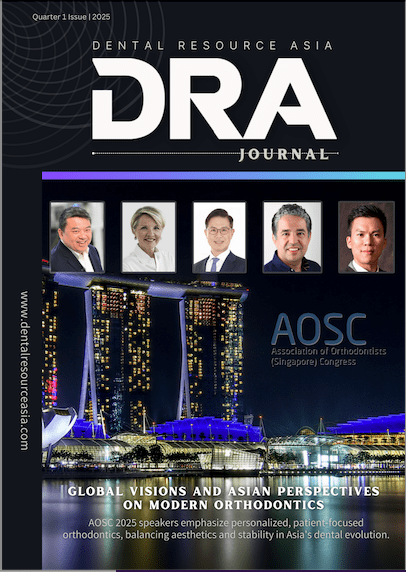Many dentists believe that the only reason dental labs outsource their work is to save on costs, but it is really about the results.
One contentious issue that keeps coming up in conversations, impacting both dentists as well as lab owners is the question of outsourcing. As a dentist, you may be reticent about the prospect of choosing an offshore supplier for your dental work, and understandably so. Indeed, this question cannot be viewed through the lens of cost efficiencies alone but whether a long-term offshoring partnership is sustainable.
Offshoring then and now
The concept of offshoring is not new. About 25 years ago, American manufacturers started moving high-volume production to Singapore, Hong Kong and the Philippines. Today, China is a key exporter of dental products to Europe, United States, Japan and Australia.
China also happens to be one of the key technological drivers of our turbo-charged future, well on the way to leading in high tech exports including aerospace, computing, pharmaceuticals, scientific instruments and electrical machinery. Most of the products that you find are made in China, from household appliances to smartphones and automobiles – covering a wide spectrum from low quality to best in class products.
That’s all well and good but as a dentist, your question is perhaps more specific: “Can the Chinese lab deliver a low-cost, high quality crown with the right material in quick turnaround time?”
The answer is an emphatic “YES”, and not just crowns. Of course, it is much easier to communicate and work through a local lab that is connected with a Chinese lab.
Why outsource to a Chinese dental lab
There are sound business reasons as to why more and more local labs are teaming up with their Chinese counterparts – and NO, it’s NOT just about lowering costs! Here are some reasons that you may not have considered:
Experienced technicians: Chinese dental labs typically allocate overseas cases to experienced technicians, many of whom have worked for more than 10 years. Given their high volume turnover, these technicians would simply have worked on a greater number and variety of cases as compared to their Aussie counterparts. You know what they say: Practice makes perfect!
Faster turnaround: Chinese labs employ up to thousands of technicians. With more hands on deck and a shift-based workforce that is far more immune to effects of staff turnover and medical leave absence, they are able to operate around the clock and make timely deliveries.
Case overflow: If a small local lab gets inundated, it is almost impossible to find a temporary lab technician on short notice. Short-term hiring and training is a very expensive option with unpredictable outcomes. Outsourcing allows for optimal use of human resources.
Specialization: In a Chinese lab, technicians specialise in specific areas so they become very good at a certain procedure. For example, more than 10 technicians are involved in making a crown, each focusing on their core areas of expertise.
State-of-the-art equipment: Cliché as it sounds this is an apt description of the technological scale and sophistication of Chinese labs. Due to their sheer size, Chinese labs are able to use the latest equipment that meet the most stringent industry benchmarks on speed and precision.
Accountability and oversight: While the QC leaders at a Chinese lab – often the most experienced technicians with overseas training – supervise the QC pipelines and are accountable for any product variance, it sometimes helps (though not entirely necessary) to have local technicians provide an additional layer of oversight while also acting as a back-up unit for any necessary adjustments.
Economies of Scale: Multi-national dental labs take advantage of their sheer size and buying power to lower expenses per unit, thereby passing on the savings to dentists and their patients.
While cutting costs may not be the only reason to outsource, it is certainly an important factor. We live in a highly competitive global marketplace where business operations need to continually streamline costs and efficiency in order to stay viable. That’s the new norm whether you relate it to running a modern dental practice or keeping a dental lab viable in this technological age.
The information and viewpoints presented in the above news piece or article do not necessarily reflect the official stance or policy of Dental Resource Asia or the DRA Journal. While we strive to ensure the accuracy of our content, Dental Resource Asia (DRA) or DRA Journal cannot guarantee the constant correctness, comprehensiveness, or timeliness of all the information contained within this website or journal.
Please be aware that all product details, product specifications, and data on this website or journal may be modified without prior notice in order to enhance reliability, functionality, design, or for other reasons.
The content contributed by our bloggers or authors represents their personal opinions and is not intended to defame or discredit any religion, ethnic group, club, organisation, company, individual, or any entity or individual.

